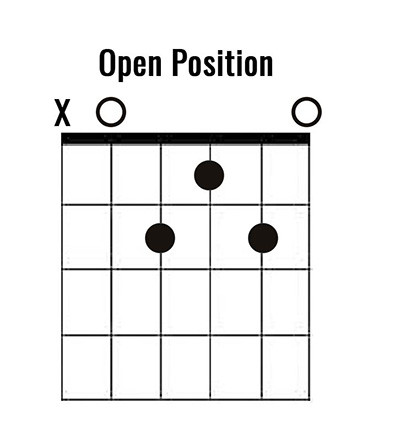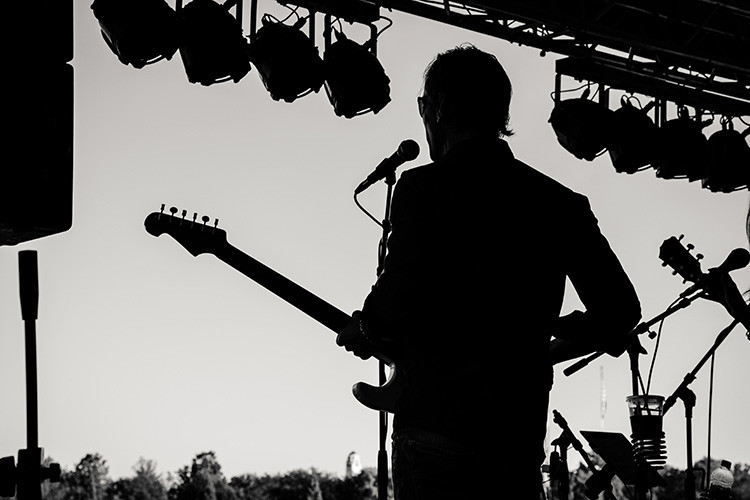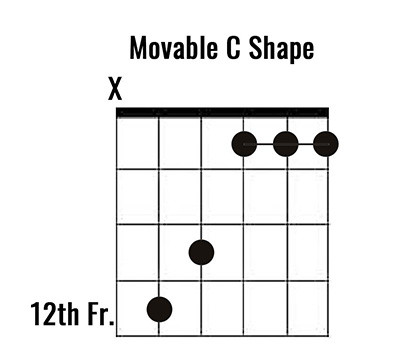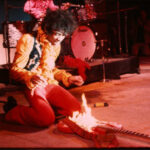The Amaj7 guitar chord is a sonically rich and versatile chord. This guide will explore 9 different voicings for this essential chord.
Join over 100,000 guitarists who receive top-notch guitar tips and tutorials directly in their inbox. Click here to subscribe!
Unlock Your Guitar Skills
In this lesson, you will discover:
- 9 crucial ways to play the Amaj7 guitar chord.
- 3 simple yet effective tips to make your chords resonate beautifully.
- A secret technique to utilize Amaj7 in diverse musical situations.
Understanding the Amaj7 Guitar Chord
The Amaj7 guitar chord serves as a sophisticated substitute for a standard major chord in numerous musical contexts.
- Amaj7 is a staple in Jazz music, prized for its nuanced and refined sound.
- This chord evokes a bright, summery feel, adding a layer of warmth and brilliance to any chord progression.
- Amaj7 is also prevalent in ballads and Pop music, lending depth and emotion.
Unlike typical three-note chords, Amaj7 incorporates four distinct notes.
This additional note elevates the harmonic complexity of our chords, a principle applicable to virtually any chord we already know.
Let’s delve deeper into why the Amaj7 guitar chord is an invaluable asset to your musical toolkit.
Amaj7 Guitar Chord – Open Position
The open position is always the ideal starting point when learning any new guitar chord.
- Open positions leverage open strings as part of the chord, reducing initial finger strain and making learning easier.
- The Amaj7 guitar chord in its open form is particularly melodious and full.
- Practice playing the notes of the chord individually as an arpeggio. This exercise will refine your ear, helping you identify chords and their constituent notes more effectively.
Pro Tip: If you encounter difficulty forming the chord, break it down into smaller parts.
When learning the open position Amaj7, start by strumming just two strings, then three, gradually building to the full chord. Patience and consistency are key!
 Amaj7 open position chord diagram
Amaj7 open position chord diagram
Here’s a recommended fingering for the open position Amaj7 guitar chord:
A String: Open
D String: Middle finger (2nd fret)
G String: Index finger (1st fret)
B String: Ring finger (2nd fret)
High E: Open (optional)
Experiment with slight adjustments to these finger positions to find what feels most comfortable and efficient for your hand.
- Every guitarist’s hand is unique. Finding a comfortable and sustainable position is paramount.
- Never compromise comfort for the sake of a ‘perfect’ chord. Instead, adapt and find a comfortable way that works for you!
Now, let’s explore ‘movable’ versions of the Amaj7 guitar chord.
Master 12 Beginner-Friendly Chords – Download Our FREE Guide
Unlock Your Chord Mastery Today!
✅ Stop struggling with difficult chords. Start making music effortlessly.
✅ Learn simplified versions of every essential chord.
Our most popular guide will rapidly enhance your chord skills! 😎
Get a Personalized Guitar Learning Journey 🎸
For a customized learning plan tailored to you, explore GuitarMetrics™: Click here for GuitarMetrics™
World-Class Guitar Education 🌎
Learn from globally recognized guitar instructors: Explore our guitar courses
The Amaj7 Guitar Chord – Movable E Shape
If you’re new to movable chords, the concept is straightforward:
- Movable chords utilize shapes that can be shifted up and down the fretboard to create the same chord in different keys without altering the finger pattern.
- Mastering movable shapes greatly simplifies transitioning between chords.
Therefore, consistent practice of these shapes is exceptionally beneficial.
 Amaj7 movable E shape chord diagram
Amaj7 movable E shape chord diagram
This particular shape is termed a “movable E shape” because it mirrors the form of an Emaj7 chord if transposed to the open position.
Let’s examine the details:
- We present the full version of this chord for comprehensive practice. However, playing the B and high E strings is optional.
- These top two strings often duplicate notes already present in the lower register of the chord, making them somewhat redundant in certain contexts.
You can execute this shape using four fingers as demonstrated below:
Low E String: Index finger (5th fret)
A String: Pinky finger (7th fret)
D String: Middle finger (6th fret)
G String: Ring finger (6th fret)
 Amaj7 movable E shape alternative fingering
Amaj7 movable E shape alternative fingering
The Amaj7 Guitar Chord – Movable A Shape
The Amaj7 chord shape itself is also movable, and it’s relatively easy to grasp if you’re already comfortable with barre chords.
To effectively utilize this movable shape across the fretboard, understanding the note sequence on the A string is crucial.
Familiarity with the A string notes provides a clear map of the complete octave from A to G# along the fretboard.
If you aim to deepen your understanding of note progression on the guitar, the A string is an excellent starting point.
Skill Booster: Playing the Amaj7 guitar chord in various positions unlocks a sophisticated jazz-infused sound.
Try this exercise: Play the open position Amaj7, then transition to another position using the same chord shape.
Experiment by moving from the open position to the fourth fret (resulting in C#maj7), and then to the second fret (Bmaj7). Notice the pleasing sound variations?
 Amaj7 movable A shape chord diagram
Amaj7 movable A shape chord diagram
While it might initially feel challenging if you’re newer to guitar, consistent and focused practice will enable you to play the Amaj7 guitar chord in no time.
The Amaj7 Guitar Chord – Movable D Shape
The next movable Amaj7 shape is the D shape, named for its resemblance to an open position Dmaj7 chord.
- This shape positions us higher up the fretboard, around the 7th fret on the D string (a helpful memory aid).
- This higher fretboard position places us in the guitar’s higher register, resulting in a noticeably brighter and more ringing Amaj7 voicing compared to the previous shapes.
Examine the chord shape illustrated below:
This shape is generally less complex to execute than the movable E shape, and its higher voicing imparts a brilliant sheen to the top notes.
While you can play this Amaj7 guitar chord shape with four individual fingers, barring your ring finger across the G, B, and high E strings is often more efficient and sustainable in the long run.
Experiment with both techniques to determine your preference. If you choose to use four fingers for this Amaj7 version, here’s a suggested fingering:
D String: Index finger (7th fret)
G String: Middle finger (9th fret)
B String: Ring finger (9th fret)
High E: Pinky finger (9th fret)
Amaj7 Guitar Chord – Unpacking its Musical DNA
In this section, we’ll dissect the construction of the Amaj7 chord to understand its unique sound.
First, let’s list the notes within the A major scale to identify the building blocks of this chord.
The A major scale notes are:
A (1st) – B (2nd) – C# (3rd) – D (4th) – E (5th) – F# (6th) – G# (7th)
The Amaj7 chord is composed of four notes:
A – C# – E – G#
Analyzing this, we see that the Amaj7 chord comprises the 1st (root), 3rd, 5th, and 7th degrees of the A major scale.
 Amaj7 chord structure diagram
Amaj7 chord structure diagram
While a standard major chord is built from three notes (1st, 3rd, and 5th), the addition of the 7th scale degree (G#) is what distinguishes the Amaj7 guitar chord and gives it its characteristic color.
- This is why we designate it as ‘Amaj7’ – indicating a Major 7th chord.
- Major 7 chords possess a harmonic pull towards other chords, creating compelling dynamics within chord progressions.
- Try playing a D major chord followed by Amaj7. Notice how the Amaj7 seems to naturally resolve back to the D major, creating a pleasing musical tension and release.
Now that we understand its theory, let’s continue exploring more ways to play it!
The Amaj7 Guitar Chord – Movable C Shape
This voicing utilizes what’s known as a “partial barre chord.”
- This term simply means you’ll be using your index finger to barre across multiple strings, but not necessarily all six.
- The Amaj7 guitar chord rings out with clarity and openness high up the neck, starting at the 12th fret on the A string for this movable C shape.
- This is a less conventional shape, but a valuable addition to your repertoire, especially as it starts with the pinky finger leading the shape.
If your pinky finger isn’t fully warmed up, that’s perfectly fine. Practice the chord in stages until you can comfortably manage the full shape!
Similar to the open position Amaj7, the high E string is optional in this movable C shape, simplifying things especially for beginners.
Here’s a suggested finger placement:
 Amaj7 movable C shape chord diagram
Amaj7 movable C shape chord diagram
A String: Pinky finger (12th fret)
D String: Ring finger (11th fret)
G & B Strings: Index finger (9th fret)
High E: Index finger (9th fret) (optional)
Practice Tip: Initially, focus on ensuring the B and G strings ring clearly with your index finger barre before attempting the full chord. This isolates the most challenging part of the shape and makes mastering it easier.
The Amaj7 Guitar Chord – Movable G Shape
Let’s briefly discuss movable chord shape naming conventions before proceeding:
- The names assigned to these movable chord shapes can vary slightly depending on the guitarist or teacher you consult.
- Musical theory interpretation can have subtle variations among musicians regarding chord nomenclature.
The movable shapes presented here are based on the CAGED system – you can learn more about that here.
Now, let’s examine the movable G shape for the Amaj7 chord:
 Amaj7 movable G shape chord diagram
Amaj7 movable G shape chord diagram
The movable G version of the Amaj7 guitar chord requires a significant hand stretch.
Because this shape spans all six strings, barring with your index finger is necessary.
Refer to the finger layout below for an effective hand position:
Low E: Pinky finger (5th fret)
A String: Ring finger (4th fret)
D, G & B Strings: Index finger (2nd fret)
High E: Middle finger (4th fret)
- Take your time with this shape and don’t hesitate to practice it in smaller segments initially.
- With this particular chord shape, feeling pressured to play every note is unnecessary.
- To simplify it, you can effectively play just the top 4 strings and still get a great Amaj7 sound.
The Amaj7 Guitar Chord – Chord Inversions
A more advanced technique to explore with the Amaj7 guitar chord is inverting the order of its notes.
- Chord inversions are simply different ways to voice the same chord, using the same notes but in a different sequence.
- While inversions contain identical notes, they subtly alter the chord’s tonal color and character.
- Inversions also expand our fretboard visualization, enhancing our “mental map” of note locations and relationships across the guitar neck.
Examine the fretboard diagram to see the numerous locations where the notes A, E, C#, and G# can be grouped closely together.
There are many possibilities, aren’t there? Learning the positions of each of these notes unlocks significant fretboard understanding.
Challenge: There are countless combinations for playing the Amaj7 guitar chord. Use the fretboard map provided to discover as many different voicings as you can.
Pay attention to how each inversion sounds when you emphasize a different chord tone as the lowest note (root).
- “Rooting” the Amaj7 chord on G# (making G# the bass note) creates a darker, more dissonant quality.
- Rooting it on C# produces a more mysterious and ambiguous sound. Starting Amaj7 with an E in the bass imparts a somber and melancholic tone.
 Amaj7 chord inversion fretboard map
Amaj7 chord inversion fretboard map
Mastering the Amaj7 Guitar Chord
Now that we’ve covered the definition of the Amaj7 guitar chord and various ways to play it, we can address the most crucial aspect of musical development: Mastery.
Mastery.
- Mastery is essential because it transforms practice into deep-seated musical knowledge. However, mastery is only attainable through consistent and dedicated practice.
- One of the most effective methods for mastering the Amaj7 guitar chord is to practice it across the entire fretboard in its various movable shapes.
Utilizing movable shapes helps you internalize every possible location where a chord can be played (and there are many when you analyze it comprehensively).
Beyond practicing movable shapes, incorporating arpeggios into your practice routine significantly enhances both your playing technique and theoretical understanding.
- Arpeggios are simply chords played one note at a time, rather than strummed as a block.
- Playing chords as arpeggios accentuates the individual character of each note and strengthens your ear’s recognition of the chord’s sonic components.
- Arpeggio practice improves picking precision, fretting accuracy, and overall finger dexterity. It also fosters fluid coordination between your left and right hands.
Both arpeggios and chord practice should be integral components of your daily guitar regimen, as they profoundly benefit every facet of your guitar playing.
Where To Go Next?
Eager to advance your guitar skills further? We highly recommend these steps:
- Integrate chord and arpeggio practice into your routine and maintain consistent practice.
- Sing the notes of the chords you are practicing to develop your ear training.
- Practice these Amaj7 chord shapes and inversions with your guitar teacher for personalized guidance.
- Beginner players: Acquire a copy of Hal Leonard’s Guitar Chords Deluxe.
- Intermediate players: Obtain Joe Pass’ Guitar Chords Book to explore chord inversions and deeper harmonic understanding. This book unveils how chords share notes and encourages viewing chords from diverse perspectives. Approach it with curiosity and prepare for a wealth of guitar knowledge.
Explore More Guitar Resources
For further guitar education, explore our additional free resources:
What Guitarist Type Are You?
Take our quick 60-second quiz and discover your guitar personality: Take The Quiz Now
Join the Premier Online Guitar Community 🌎
- Receive your personalized guitar learning roadmap, tailored specifically for you.
- Access world-class online guitar courses, learn at your own rhythm.
- Engage in our Community Campus & Learning Forum – a supportive and welcoming space to connect with fellow students and our team. 😊
- Explore our Beginner Song Library featuring chordsheets, tabs, and helpful tips suitable for all skill levels.
- Participate in regular live streams, seminars, and Q&A sessions – learn directly from leading guitar educators and get all your questions answered in real-time!
Click here to discover National Guitar Academy membership
Cool Guitar Merchandise 😎
Enhance your style! Explore our exclusive merch collection: Visit our merch store
Want Free Guitar Tips & Video Lessons Delivered To Your Inbox?
Join our community of over 100,000 guitar learners and subscribe to our free guitar-tips-by-email service.
We’ll deliver a curated series of lessons designed to elevate your guitar journey to the next level.
Learn how everything connects seamlessly, effortlessly, and effectively. We share both innovative techniques for instant progress and foundational principles that will deepen your musical comprehension.
Get Our Best Guitar Tips & Videos Now
Popular Guitar Lessons
Learn Guitar in 11 Steps: Beginner Program
10 Easy Beginner Guitar Songs
Master Guitar Strumming Techniques
Choosing Your First Beginner Guitar
Guitar Notes for Beginners: A Comprehensive Guide
Introduction to Lead Guitar Playing
3 Simple Ways to Play the Bm Chord
Explore More Guitar Content
Discover more about National Guitar Academy: About Us
Connect with us on Facebook for daily guitar insights.
Listen to our Learn Guitar Podcast for rapid guitar advancement.
Explore our extensive free chord lessons.

